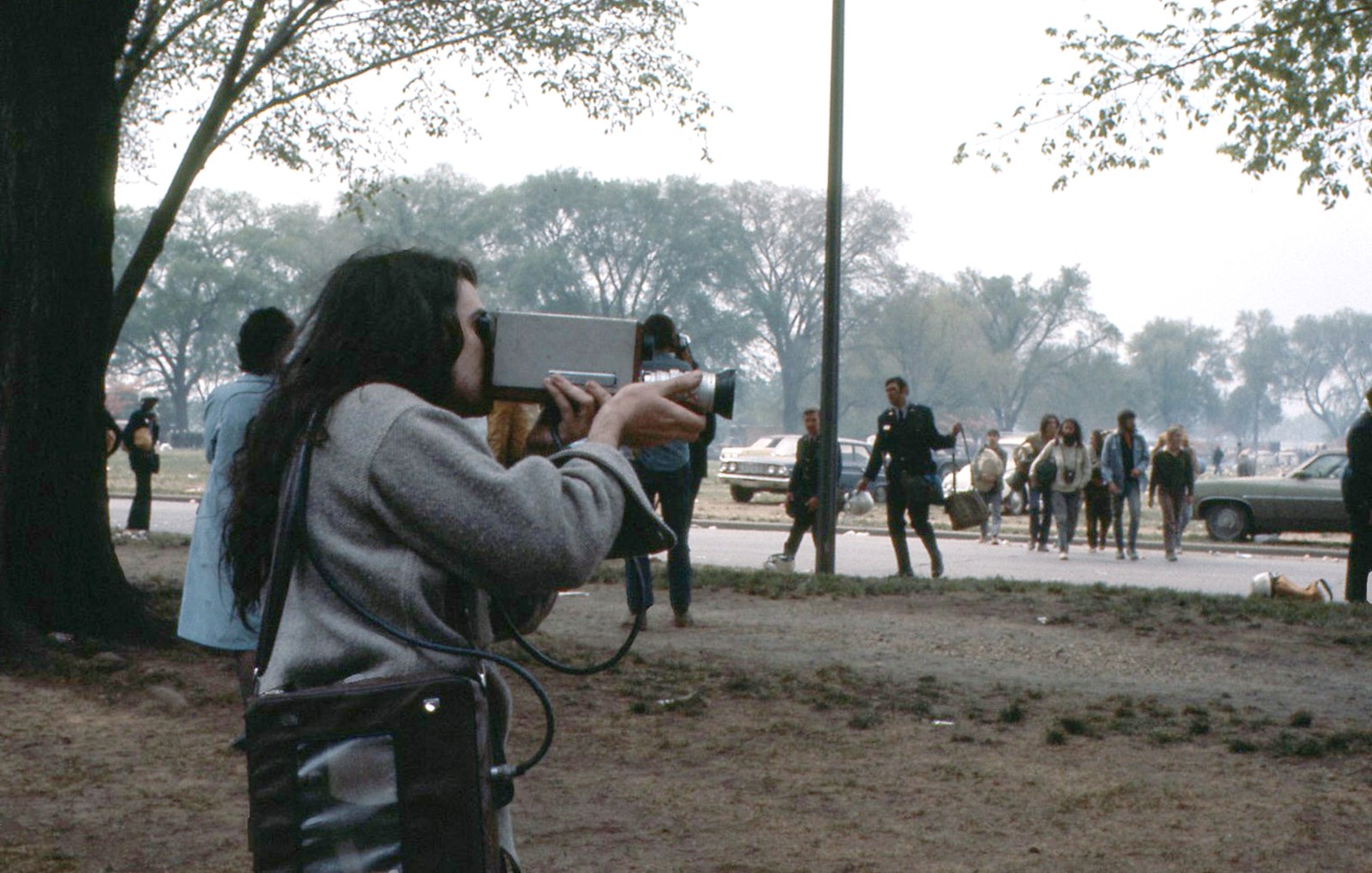Colourful Digits

Internet Art. Freedom. Expressionism. Equality. Devilish. – These are topics that I could come up with when I think “Internet Art“. What. is. Internet Art?
Allow me to share what I initially thought of Internet Art. I thought that there wasn’t any meaning to it and found that it was for the most part “artistic” or “cool-in-a-different-way-kinda”. Internet Art, did not convince me that it was a thing. I refused to recognise this as an art form.
As we got deeper into the different concepts, I was still hesitant but I had a better understanding of it and made some sense out of it. Basically these are the concepts covered but listed based on my own interpretation summarised.
Internet Art: Expressionism with the freedom to use any technology available to help convey the message or art direction in an easier way for the general masses to interpret yet room to have multiple understandings based on each individual’s intellect of the world and on-goings on a digital platform which may or may not necessarily be reproduced in print or any other representations.
So, Internet Art has got a meaning. But why the revelation?
Empowerment:
Alternate media or anything other than mainstream media allowed for ideas and concepts to be publically expressed in any way deemed possible subjected to technological limitations. The best part about this limitation was that it pushed one to explore “work-arounds” to solve the problems. Videofreex was a good example with this. They used what was available to them coupled with their idea on how they feel media could be done right, made them such a huge success. This allowed people of the general masses have their voices heard and also take ownership of their own work. This empowered them.
https://media.giphy.com/media/xUA7aMcImWHJ5tD9h6/source.gif
Ispossible:
Because of the advent of Internet Art, or for that matter, Internet, many things that were once imaginary was now possible to materialise despite it still being fictional. Before, we could not show others what they were thinking in their mind but with the advancements, we can do that. And this opens up so many possibilities that could one day exist in this physical world. Take Hole in Space by Kit Galloway & Sherrie Rabinowitz for example. People from a different time space can now communicate through a shared dimension in the third space. I would say that this was revolutionary in bringing individual ideas and having the possibility to turn them into collaborative ideas. It allowed for communities to grow in their own concepts. Think of this as the visualisation of what goes on inside the brains of many individuals as a result of a collaborative piece.
Relativity
Does it ever occur to you that you are nothing but a number? Or that you are just a speck of dust in this vast universe? Do you think you really matter? Can your voice actually be heard by others? Who are you?
I would like to draw a link between Internet Art and Relativity as a concept or theory. (Based on my own interpretations) The Third Space is like a canvas, very much like a universe (if you do believe it exists) and, we are one small little living matter drawing energy within it. This space that we can’t touch but only see is ever so powerful because it is limitless. The extent to which you can do anything is beyond imaginable. And this is how relativity falls into place. How we interpret our surroundings and how we believe we belong gives us meaning in this world. Of the past 6-7 weeks, the pieces that we were involved in gave us a footing. Take the collaborative piece we did on Flickr and on Adobe Connect for example.
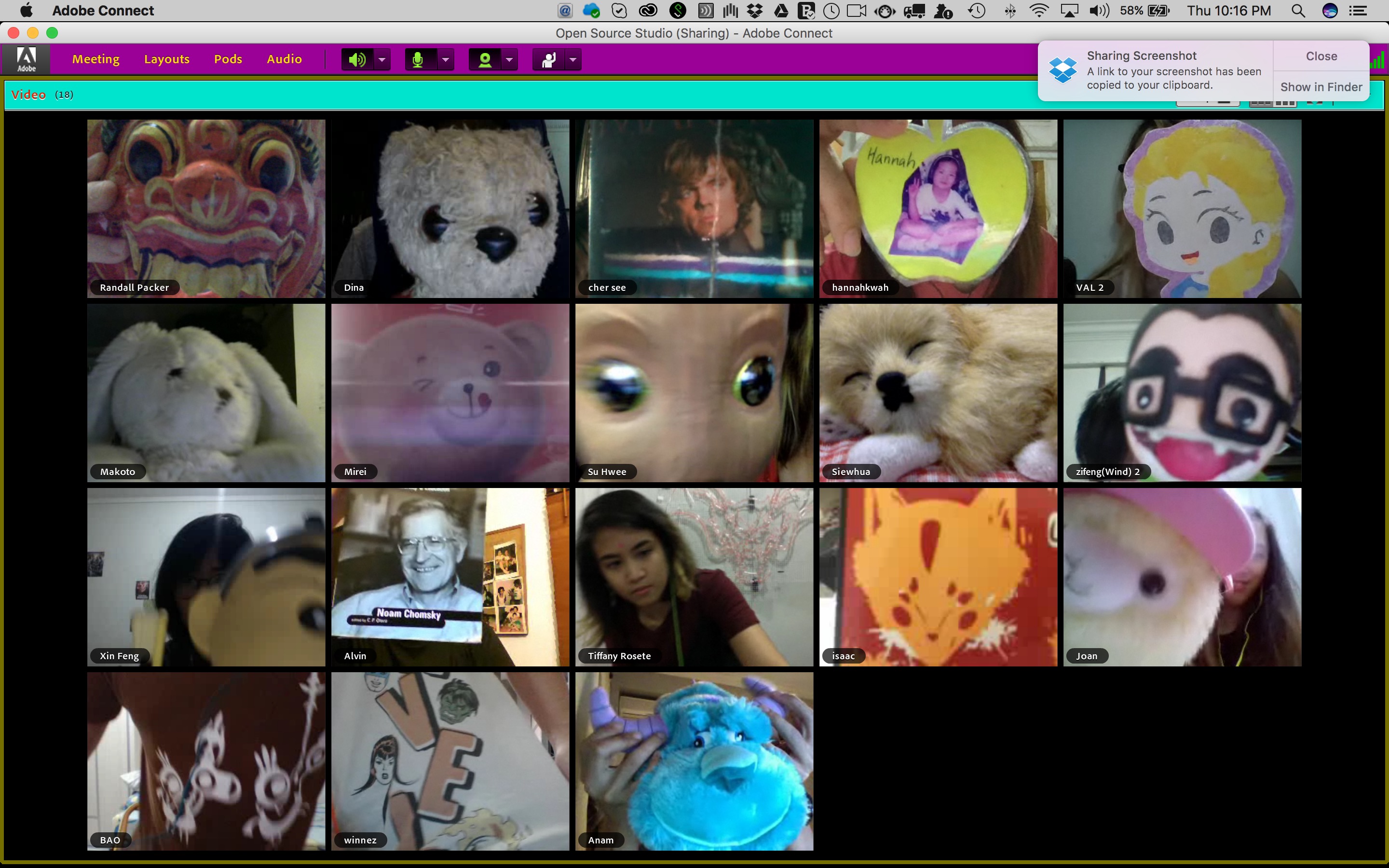
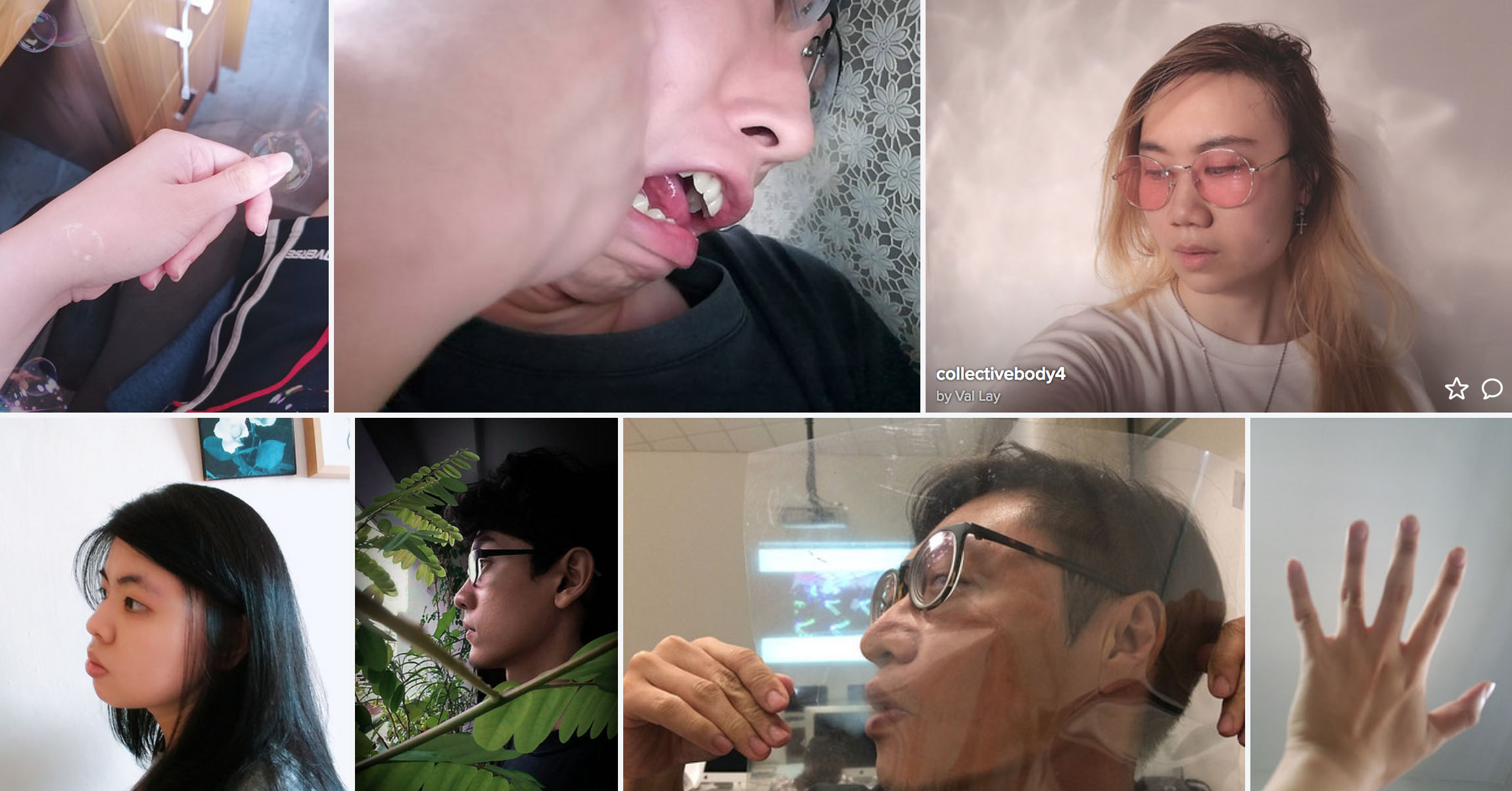
I felt like we were more than just numbers and specks of dust. There were people viewing and/or listening to what we put out and that felt wonderful. Using OBS to broadcast and to interact or involve others further allowed me to discover myself.
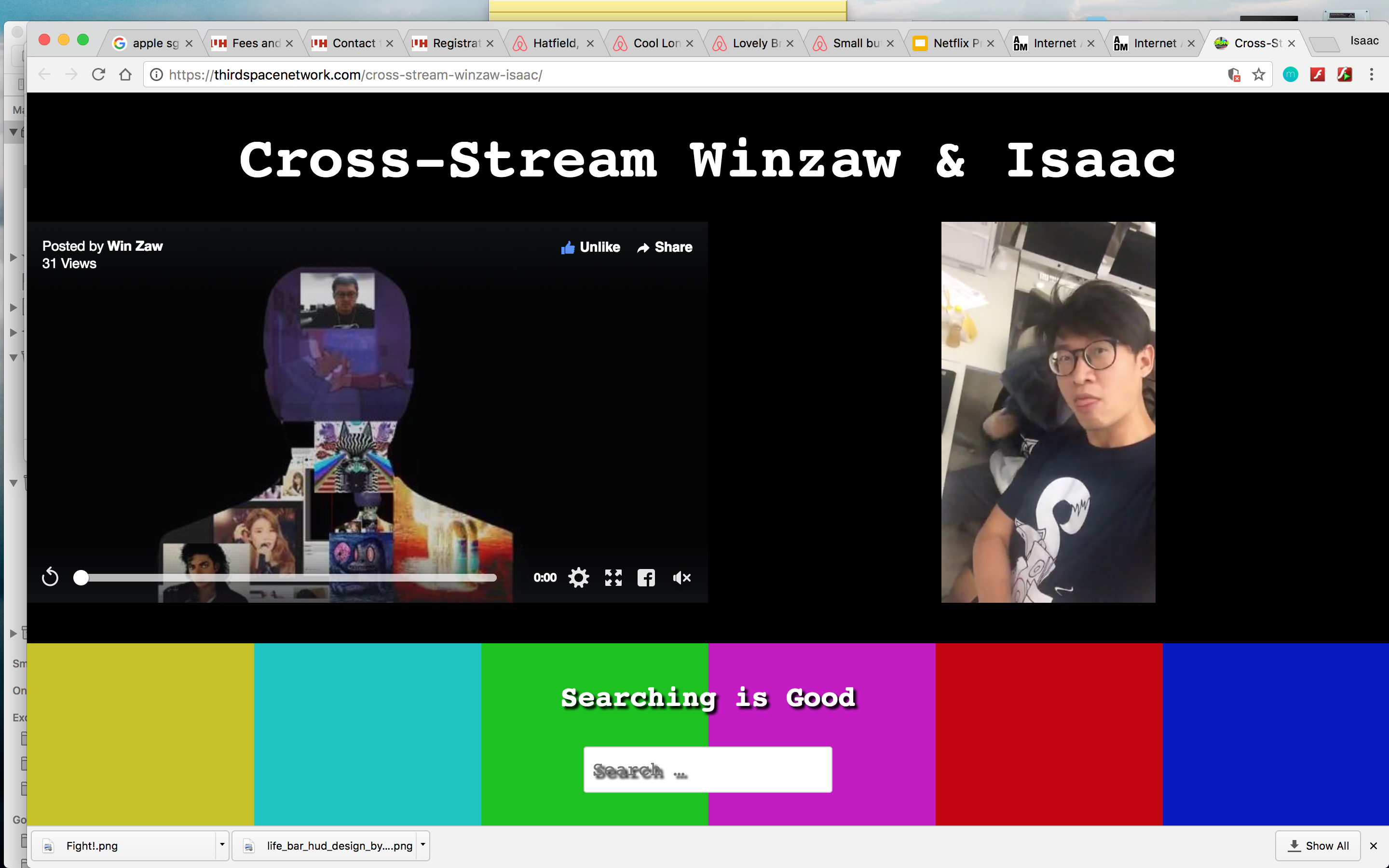
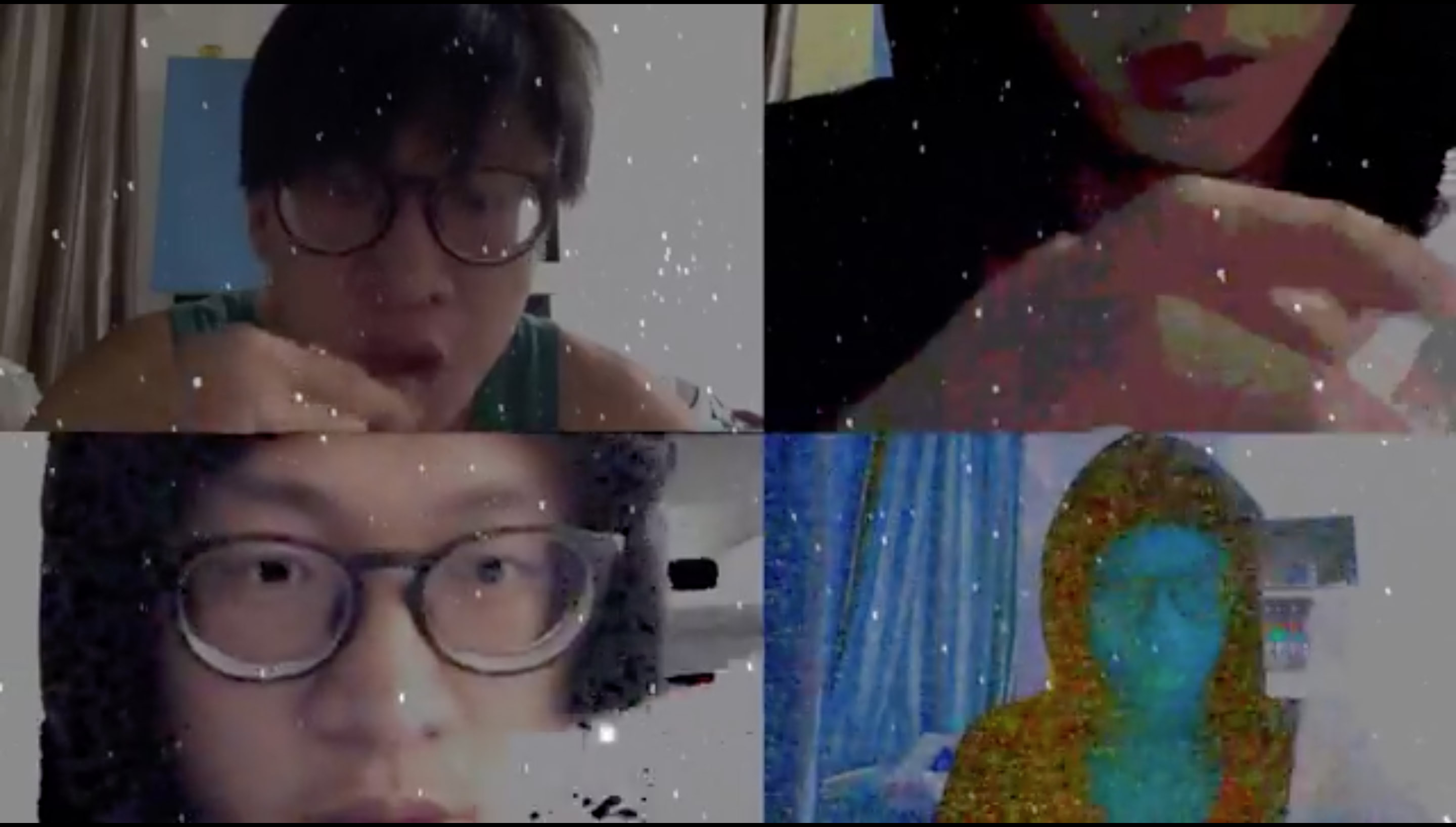
Cross streaming and FB live opened further a world of possibilities of interaction and based on the history of Internet Art and Culture, it will challenge the notion of what freedom of speech actually means and the values and cultures that comes with it. Social Broadcasting, as an extension of Hole in Space, is an epitome of what to expect of The Third Space. What Win Zaw and I initially came up with was to play charades but soon was hit by the limitation of bandwidth. We then thought of doing a live portrait collective by interviewing random people we find around the school. The concept worked but the hardware was the limitation.
And, this made me realise, like what I mentioned in my earlier posts, that concepts had remained stagnant while technology improved, may not be true afterall. I would like to believe that, Internet Art and Culture’s concepts did evolve with the shift in cultures and so did technology. However, technology, perhaps, was not improving fast enough to support our ideas. Maybe, this whole Third Space concept, is all about the pursuit of what never is. And that because of this, we drive the advancements in technology we constantly see.
Now What?
But amongst all these concepts and ideas, one thing remains evident. A boundless space for the manifestation of creativity. Then again, because of the nature of Internet Art, very often, there is no particular set boundary as to what Internet Art is defined by and thus, this draws variation in opinions of an artwork. Which, therefore is debatable.
Inspirations/references:
https://hyperallergic.com/263538/best-of-2015-our-top-10-works-of-internet-art/
http://www.complex.com/style/2013/04/25-internet-artists-you-need-to-know/an-xiao
http://www.bbc.com/culture/story/20140326-how-has-the-internet-changed-art
![[H Y PE RR E S S AYY] – Colourful Digits](https://oss.adm.ntu.edu.sg/ichu001/wp-content/uploads/sites/178/2017/09/giphy-downsized.gif)
